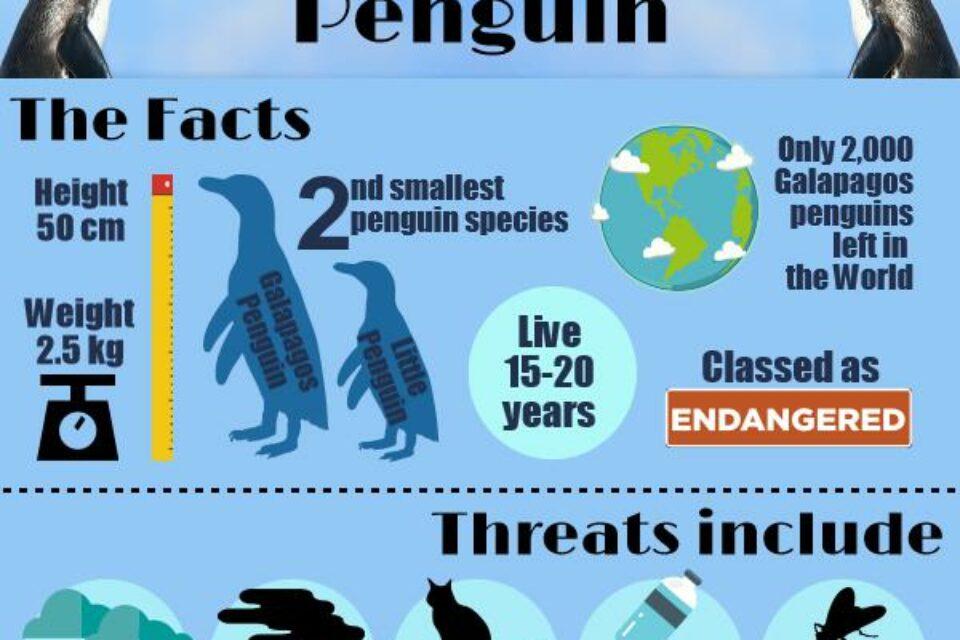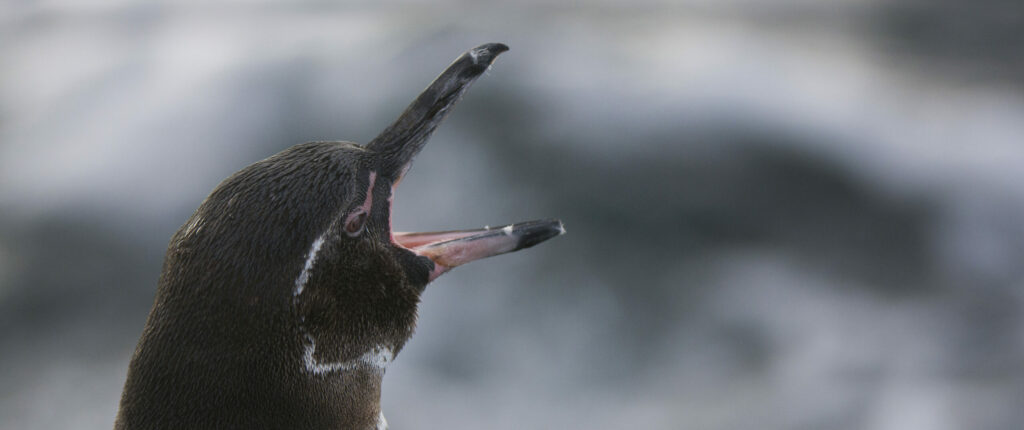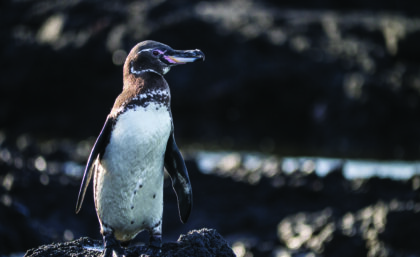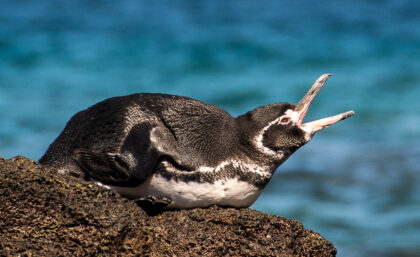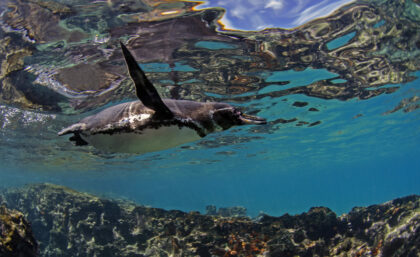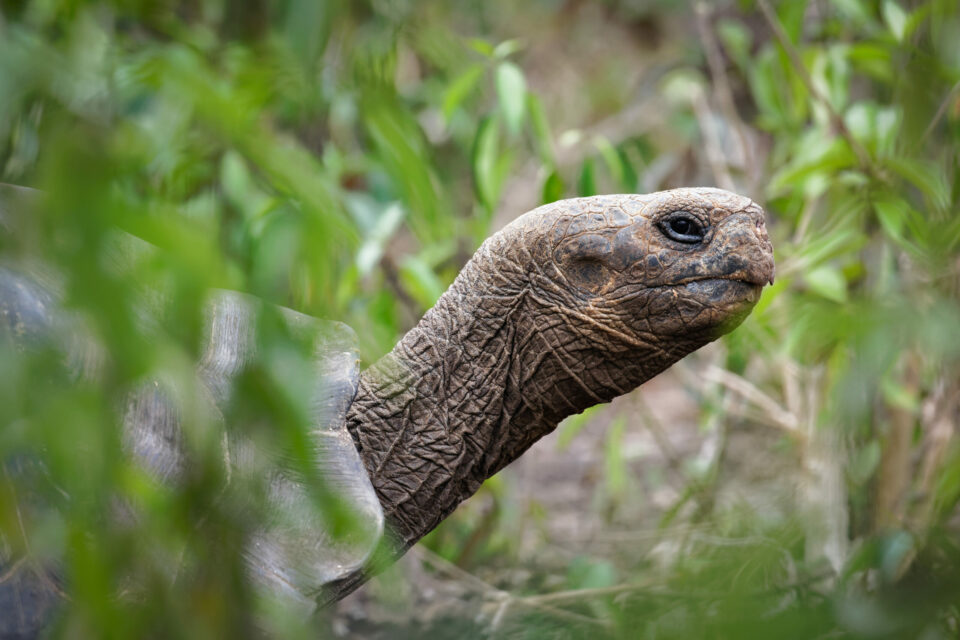
Common name:
Galapagos penguin
Scientific name:
Spheniscus mendiculus
Spanish name:
Pingüino de Galápagos
Conservation status:
Endangered
Average lifespan:
20 years
Average size:
49 centimetres
Maximum size:
55 centimetres
Average weight:
2.5 kilograms
Overview
The Galapagos penguin is one of the smallest penguins in the world and is endemic to the Galapagos Islands. It is the most northerly occurring penguin species, nesting entirely in the tropics, with some colonies living on the northern tip of Isabela in the Northern Hemisphere. They are closely related to the African, Humboldt and Magellanic penguins, all of which are burrow-dwelling. As there is no soft peat in which to burrow on the Galapagos Islands, Galapagos penguins instead live in caves and crevices in the coastal lava.
As with all penguin species, they are extremely agile underwater, reaching speeds of 35 km per hour when hunting. Their diet consists primarily of cold water-schooling fish, such as anchovies, sardines and mullet, which are able to live in the Galapagos Marine Reserve thanks to the cold waters of the Humboldt Current.
Galapagos penguins in Galapagos
Photo gallery
Click an image to view larger

How you can help
Please help us protect the wildlife of Galapagos by donating today or by adopting a Galapagos penguin.
Read more about Galapagos penguins...


Reducing the threat of Avian Malaria
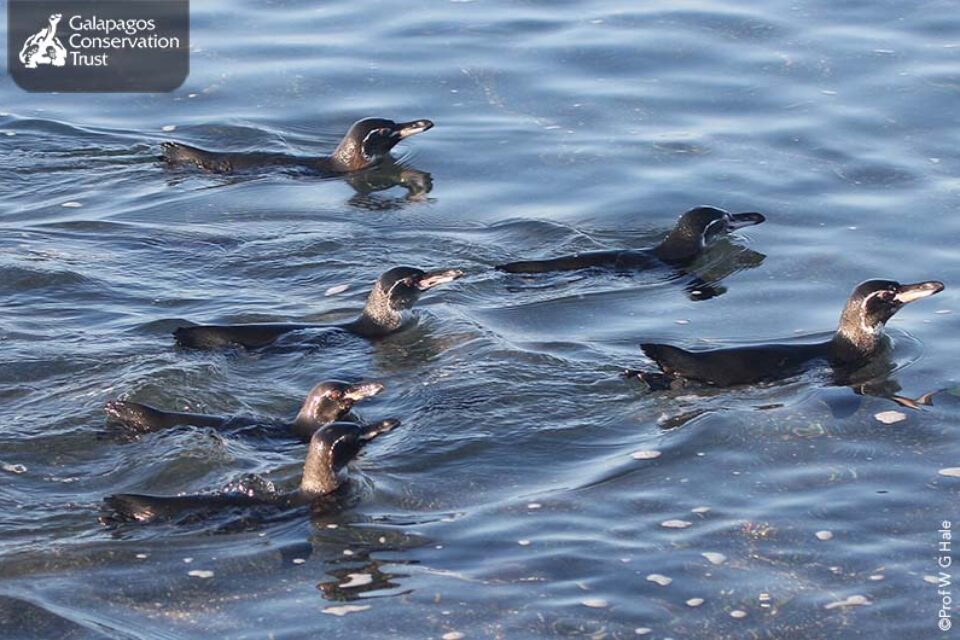
My Galapagos Experience
